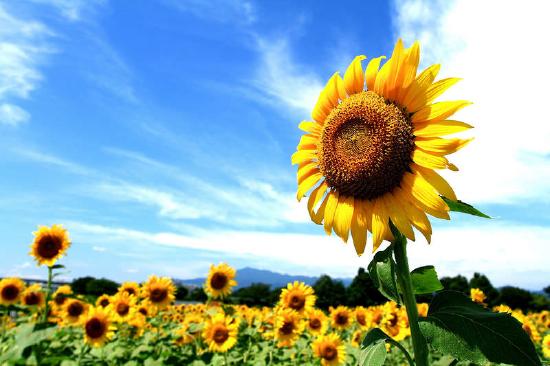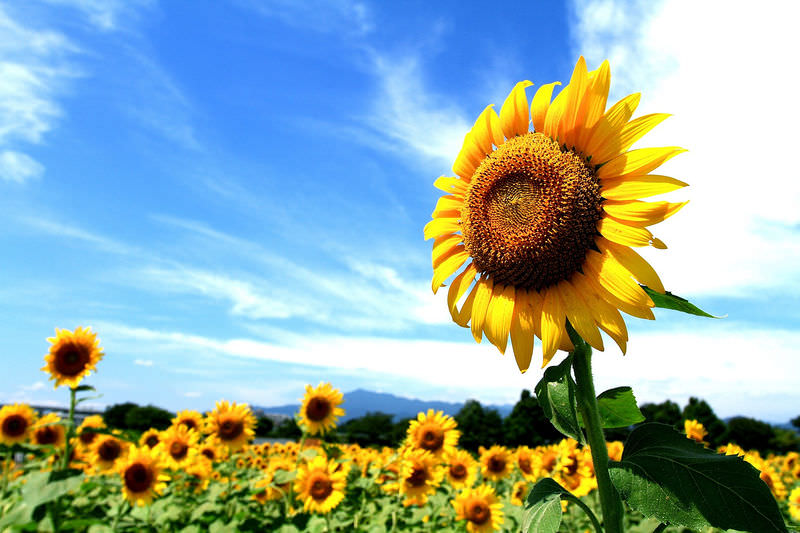9.19: Seed Plant Evolution
- Page ID
- 1497
\( \newcommand{\vecs}[1]{\overset { \scriptstyle \rightharpoonup} {\mathbf{#1}} } \)
\( \newcommand{\vecd}[1]{\overset{-\!-\!\rightharpoonup}{\vphantom{a}\smash {#1}}} \)
\( \newcommand{\dsum}{\displaystyle\sum\limits} \)
\( \newcommand{\dint}{\displaystyle\int\limits} \)
\( \newcommand{\dlim}{\displaystyle\lim\limits} \)
\( \newcommand{\id}{\mathrm{id}}\) \( \newcommand{\Span}{\mathrm{span}}\)
( \newcommand{\kernel}{\mathrm{null}\,}\) \( \newcommand{\range}{\mathrm{range}\,}\)
\( \newcommand{\RealPart}{\mathrm{Re}}\) \( \newcommand{\ImaginaryPart}{\mathrm{Im}}\)
\( \newcommand{\Argument}{\mathrm{Arg}}\) \( \newcommand{\norm}[1]{\| #1 \|}\)
\( \newcommand{\inner}[2]{\langle #1, #2 \rangle}\)
\( \newcommand{\Span}{\mathrm{span}}\)
\( \newcommand{\id}{\mathrm{id}}\)
\( \newcommand{\Span}{\mathrm{span}}\)
\( \newcommand{\kernel}{\mathrm{null}\,}\)
\( \newcommand{\range}{\mathrm{range}\,}\)
\( \newcommand{\RealPart}{\mathrm{Re}}\)
\( \newcommand{\ImaginaryPart}{\mathrm{Im}}\)
\( \newcommand{\Argument}{\mathrm{Arg}}\)
\( \newcommand{\norm}[1]{\| #1 \|}\)
\( \newcommand{\inner}[2]{\langle #1, #2 \rangle}\)
\( \newcommand{\Span}{\mathrm{span}}\) \( \newcommand{\AA}{\unicode[.8,0]{x212B}}\)
\( \newcommand{\vectorA}[1]{\vec{#1}} % arrow\)
\( \newcommand{\vectorAt}[1]{\vec{\text{#1}}} % arrow\)
\( \newcommand{\vectorB}[1]{\overset { \scriptstyle \rightharpoonup} {\mathbf{#1}} } \)
\( \newcommand{\vectorC}[1]{\textbf{#1}} \)
\( \newcommand{\vectorD}[1]{\overrightarrow{#1}} \)
\( \newcommand{\vectorDt}[1]{\overrightarrow{\text{#1}}} \)
\( \newcommand{\vectE}[1]{\overset{-\!-\!\rightharpoonup}{\vphantom{a}\smash{\mathbf {#1}}}} \)
\( \newcommand{\vecs}[1]{\overset { \scriptstyle \rightharpoonup} {\mathbf{#1}} } \)
\(\newcommand{\longvect}{\overrightarrow}\)
\( \newcommand{\vecd}[1]{\overset{-\!-\!\rightharpoonup}{\vphantom{a}\smash {#1}}} \)
\(\newcommand{\avec}{\mathbf a}\) \(\newcommand{\bvec}{\mathbf b}\) \(\newcommand{\cvec}{\mathbf c}\) \(\newcommand{\dvec}{\mathbf d}\) \(\newcommand{\dtil}{\widetilde{\mathbf d}}\) \(\newcommand{\evec}{\mathbf e}\) \(\newcommand{\fvec}{\mathbf f}\) \(\newcommand{\nvec}{\mathbf n}\) \(\newcommand{\pvec}{\mathbf p}\) \(\newcommand{\qvec}{\mathbf q}\) \(\newcommand{\svec}{\mathbf s}\) \(\newcommand{\tvec}{\mathbf t}\) \(\newcommand{\uvec}{\mathbf u}\) \(\newcommand{\vvec}{\mathbf v}\) \(\newcommand{\wvec}{\mathbf w}\) \(\newcommand{\xvec}{\mathbf x}\) \(\newcommand{\yvec}{\mathbf y}\) \(\newcommand{\zvec}{\mathbf z}\) \(\newcommand{\rvec}{\mathbf r}\) \(\newcommand{\mvec}{\mathbf m}\) \(\newcommand{\zerovec}{\mathbf 0}\) \(\newcommand{\onevec}{\mathbf 1}\) \(\newcommand{\real}{\mathbb R}\) \(\newcommand{\twovec}[2]{\left[\begin{array}{r}#1 \\ #2 \end{array}\right]}\) \(\newcommand{\ctwovec}[2]{\left[\begin{array}{c}#1 \\ #2 \end{array}\right]}\) \(\newcommand{\threevec}[3]{\left[\begin{array}{r}#1 \\ #2 \\ #3 \end{array}\right]}\) \(\newcommand{\cthreevec}[3]{\left[\begin{array}{c}#1 \\ #2 \\ #3 \end{array}\right]}\) \(\newcommand{\fourvec}[4]{\left[\begin{array}{r}#1 \\ #2 \\ #3 \\ #4 \end{array}\right]}\) \(\newcommand{\cfourvec}[4]{\left[\begin{array}{c}#1 \\ #2 \\ #3 \\ #4 \end{array}\right]}\) \(\newcommand{\fivevec}[5]{\left[\begin{array}{r}#1 \\ #2 \\ #3 \\ #4 \\ #5 \\ \end{array}\right]}\) \(\newcommand{\cfivevec}[5]{\left[\begin{array}{c}#1 \\ #2 \\ #3 \\ #4 \\ #5 \\ \end{array}\right]}\) \(\newcommand{\mattwo}[4]{\left[\begin{array}{rr}#1 \amp #2 \\ #3 \amp #4 \\ \end{array}\right]}\) \(\newcommand{\laspan}[1]{\text{Span}\{#1\}}\) \(\newcommand{\bcal}{\cal B}\) \(\newcommand{\ccal}{\cal C}\) \(\newcommand{\scal}{\cal S}\) \(\newcommand{\wcal}{\cal W}\) \(\newcommand{\ecal}{\cal E}\) \(\newcommand{\coords}[2]{\left\{#1\right\}_{#2}}\) \(\newcommand{\gray}[1]{\color{gray}{#1}}\) \(\newcommand{\lgray}[1]{\color{lightgray}{#1}}\) \(\newcommand{\rank}{\operatorname{rank}}\) \(\newcommand{\row}{\text{Row}}\) \(\newcommand{\col}{\text{Col}}\) \(\renewcommand{\row}{\text{Row}}\) \(\newcommand{\nul}{\text{Nul}}\) \(\newcommand{\var}{\text{Var}}\) \(\newcommand{\corr}{\text{corr}}\) \(\newcommand{\len}[1]{\left|#1\right|}\) \(\newcommand{\bbar}{\overline{\bvec}}\) \(\newcommand{\bhat}{\widehat{\bvec}}\) \(\newcommand{\bperp}{\bvec^\perp}\) \(\newcommand{\xhat}{\widehat{\xvec}}\) \(\newcommand{\vhat}{\widehat{\vvec}}\) \(\newcommand{\uhat}{\widehat{\uvec}}\) \(\newcommand{\what}{\widehat{\wvec}}\) \(\newcommand{\Sighat}{\widehat{\Sigma}}\) \(\newcommand{\lt}{<}\) \(\newcommand{\gt}{>}\) \(\newcommand{\amp}{&}\) \(\definecolor{fillinmathshade}{gray}{0.9}\)
Why are they called sunflowers?
When the plant is in the bud stage, the flower tends to track the movement of the sun across the horizon, hence the name sunflower. Flowering plants were the last group of plants to evolve. The flower contains both the male and female reproductive structures, and these plants have become tremendously successful. But these plants could not have evolved without the prior evolution of the seed. So what exactly is a seed?
Seed Plants Emerge
For reproduction, early vascular plants still needed moisture. Sperm had to swim from male to female reproductive organs for fertilization. Spores also needed some water to grow and often to disperse as well. Of course, dryness and other harsh conditions made it very difficult for tiny new offspring plants to survive. With the evolution of seeds in vascular plants, all that changed. Seed plants evolved a number of adaptations that made it possible to reproduce without water. As a result, seed plants were wildly successful. They exploded into virtually all of Earth’s habitats.
Why are seeds so adaptive on land? A seed contains an embryo and a food supply enclosed within a tough coating. An embryo is a zygote that has already started to develop and grow. Early growth and development of a plant embryo in a seed is called germination. The seed protects and nourishes the embryo and gives it a huge head start in the “race” of life. Many seeds can wait to germinate until conditions are favorable for growth. This increases the offspring’s chance of surviving even more.
Other reproductive adaptations that evolved in seed plants include ovules, pollen, pollen tubes, and pollination by animals.
- An ovule is a female reproductive structure in seed plants that contains a tiny female gametophyte. The gametophyte produces an egg cell. After the egg is fertilized by sperm, the ovule develops into a seed.
- A grain of pollen is a tiny male gametophyte enclosed in a tough capsule (see Figure below). It carries sperm to an ovule while preventing it from drying out. Pollen grains can’t swim, but they are very light, so the wind can carry them. Therefore, they can travel through air instead of water.
- Wind-blown pollen might land anywhere and be wasted. Another adaptation solved this problem. Plants evolved traits that attract specific animal pollinators. Like the bee in Figure below, a pollinator picks up pollen on its body and carries it directly to another plant of the same species. This greatly increases the chance that fertilization will occur.
- Pollen also evolved the ability to grow a tube, called a pollen tube, through which sperm could be transferred directly from the pollen grain to the egg. This allowed sperm to reach an egg without swimming through a film of water. It finally freed up plants from depending on moisture to reproduce.
 Individual grains of pollen may have prickly surfaces that help them stick to pollinators such as bees. What other animals pollinate plants?
Individual grains of pollen may have prickly surfaces that help them stick to pollinators such as bees. What other animals pollinate plants?Seed Plants Diverge
The first seed plants formed seeds in cones. Cones are made up of overlapping scales, which are modified leaves (see Figure below). Male cones contain pollen, and female cones contain eggs. Seeds also develop in female cones. Modern seed plants that produce seeds in cones are called gymnosperms.
 Gymnosperms produce seeds in cones (left). Each scale has a seed attached (right).
Gymnosperms produce seeds in cones (left). Each scale has a seed attached (right).Later, seed plants called angiosperms evolved. They produce flowers, which consist of both male and female reproductive structures. The female reproductive structure in a flower includes an organ called an ovary. Eggs form in ovules inside ovaries, which also enclose and protect developing seeds after fertilization occurs. In many species of flowering plants, ovaries develop into fruits, which attract animals that disperse the seeds.
Summary
- The evolution of seeds and pollen allowed plants to reproduce on land without moisture.
- Flowering plants evolved flowers with ovaries that formed fruits. They have been the most successful plants of all.
Review
- What is a seed?
- Describe cones.
- Compare and contrast gymnosperms and angiosperms, and give an example of each.
- Which major plant adaptation—vascular tissues or seeds—do you think was more important in the evolution of plants? Choose one of the two adaptations, and write a logical argument to support your choice.
| Image | Reference | Attributions |
 |
[Figure 1] | License: CC BY-NC |
 |
[Figure 2] | Credit: Pollen: Dartmouth Electron Microscope Facility, Dartmouth College; Bee: Darron Birgenheier Source: Pollen: commons.wikimedia.org/wiki/File:Misc_pollen.jpg ; Bee: http://www.flickr.com/photos/darronb/6177831662/ License: CC BY 2.0 |
 |
[Figure 3] | Credit: Flickr:tree-species Source: http://www.flickr.com/photos/22327649@N03/2169060844/ ; http://www.flickr.com/photos/22327649@N03/2169063742/ License: CC BY 2.0 |

